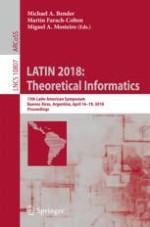2018 | OriginalPaper | Chapter
Plane Gossip: Approximating Rumor Spread in Planar Graphs
Authors : Jennifer Iglesias, Rajmohan Rajaraman, R. Ravi, Ravi Sundaram
Published in: LATIN 2018: Theoretical Informatics
Publisher: Springer International Publishing
Activate our intelligent search to find suitable subject content or patents.
Select sections of text to find matching patents with Artificial Intelligence. powered by
Select sections of text to find additional relevant content using AI-assisted search. powered by
